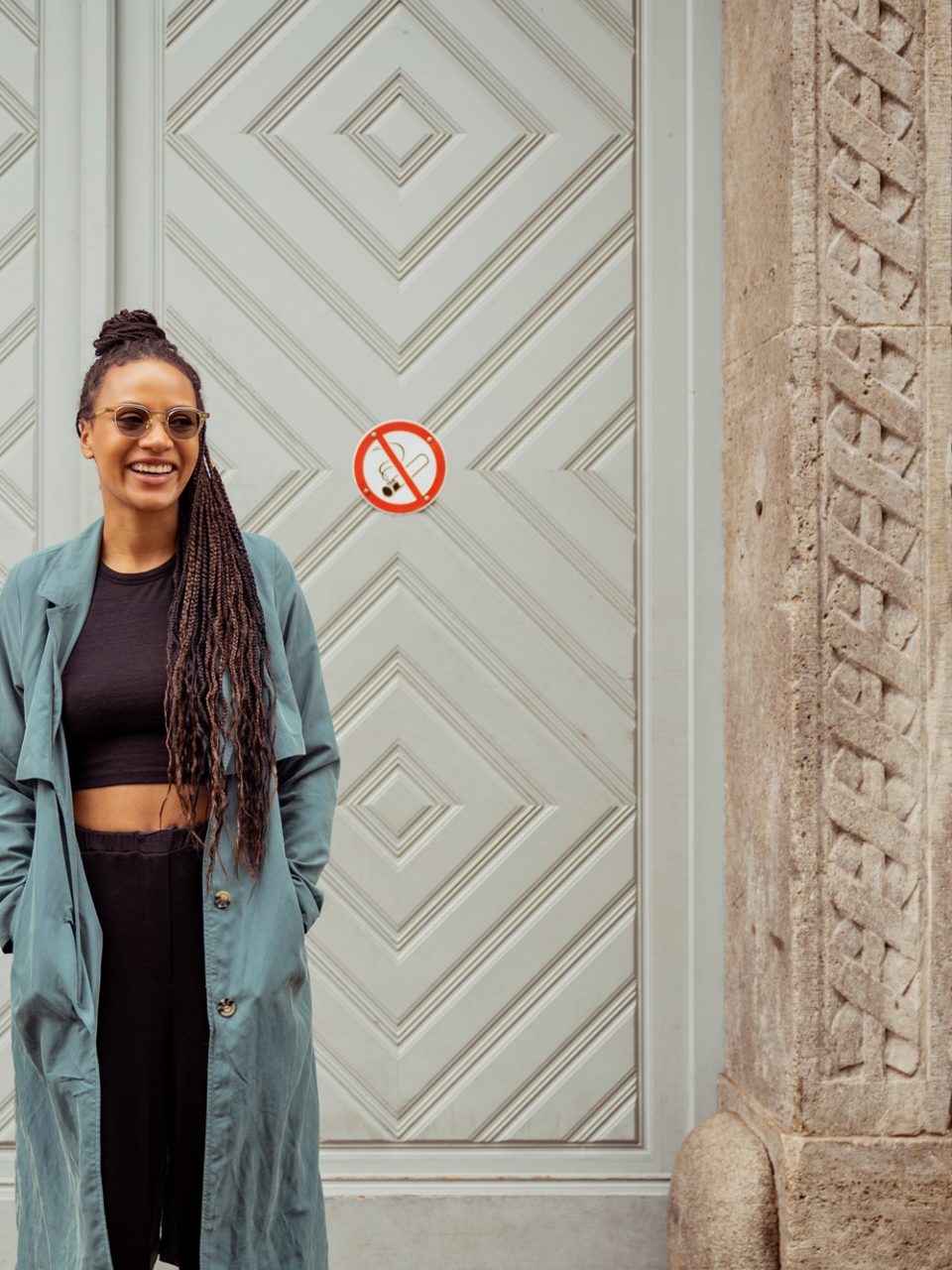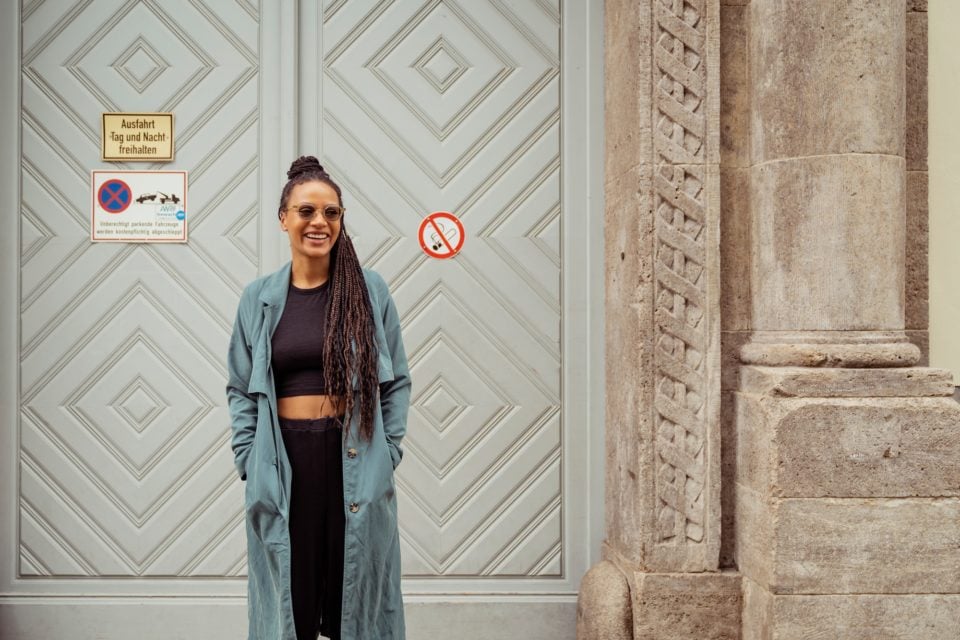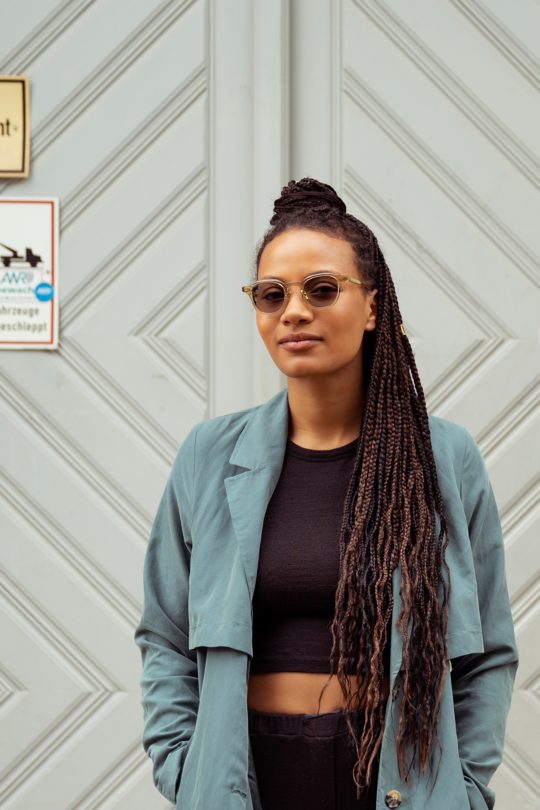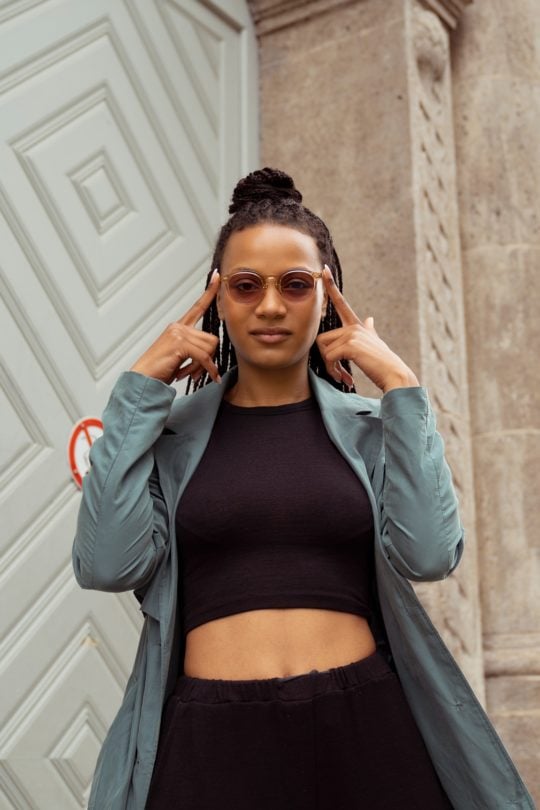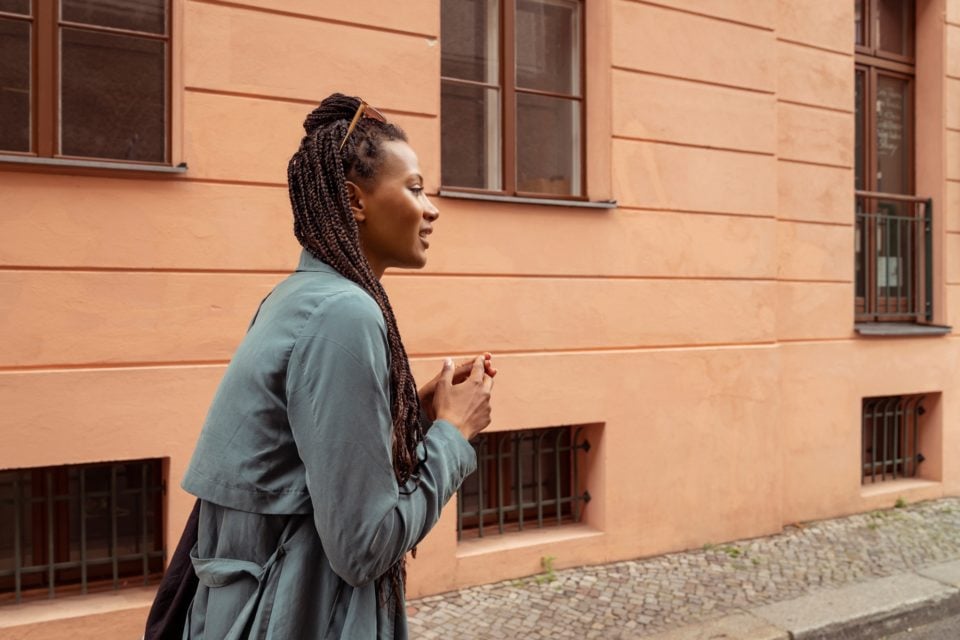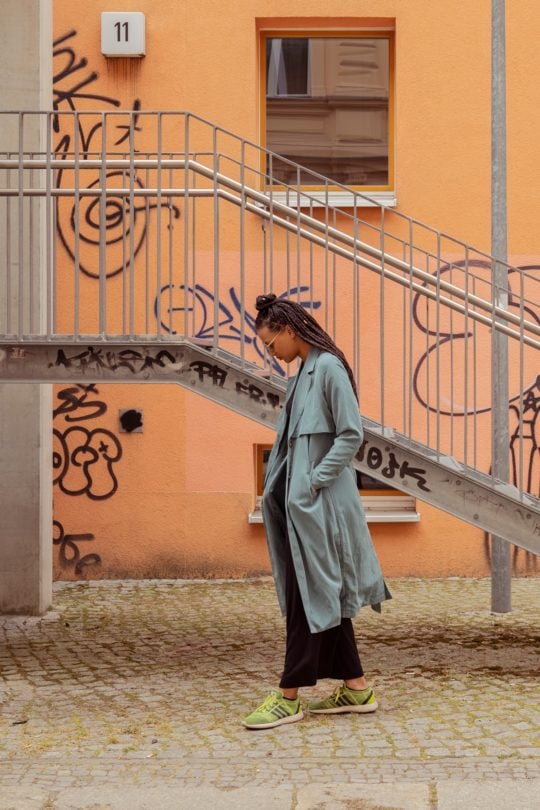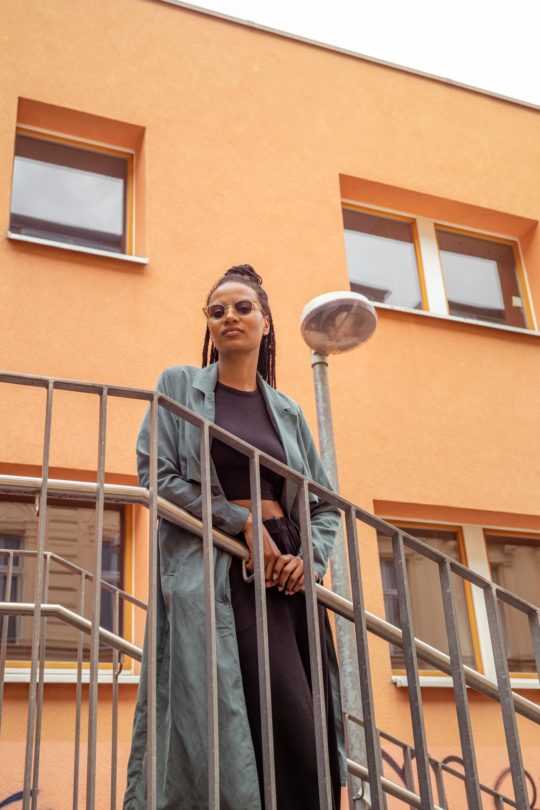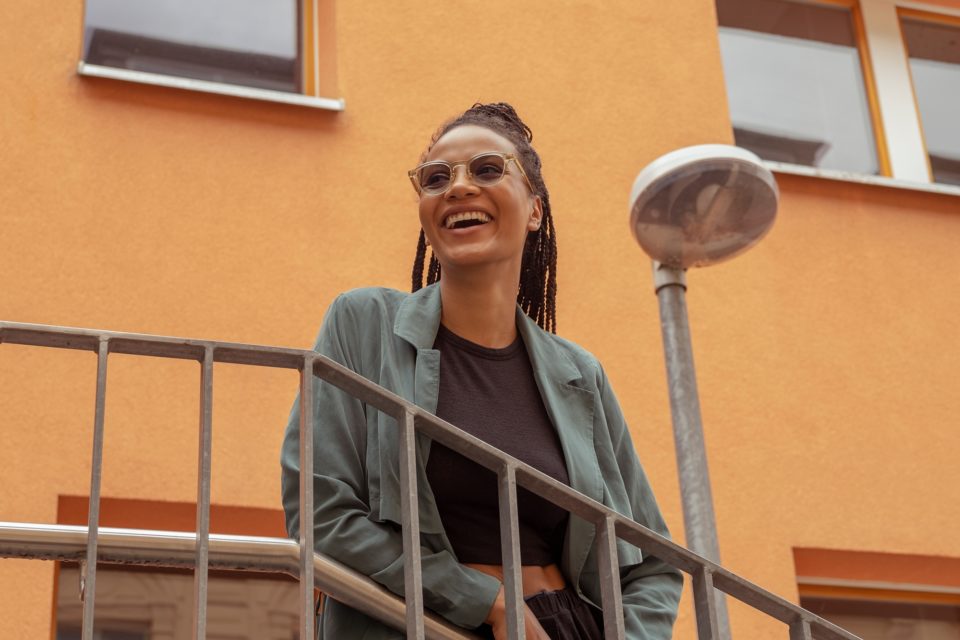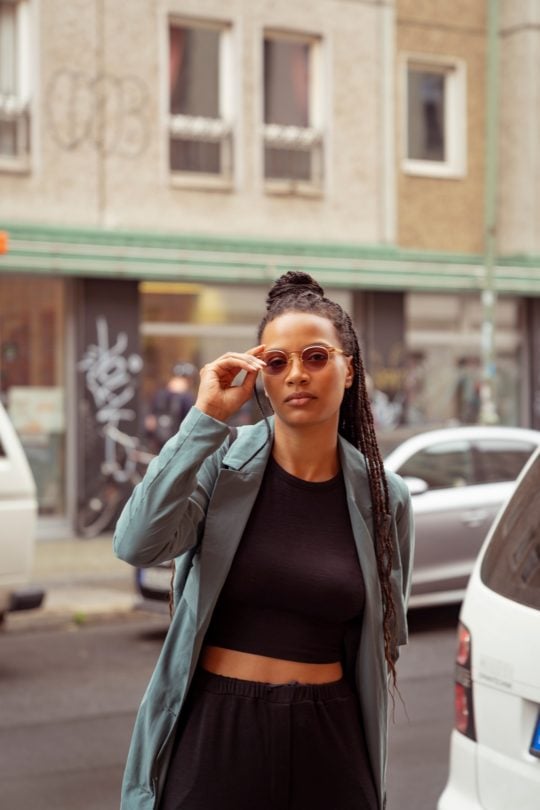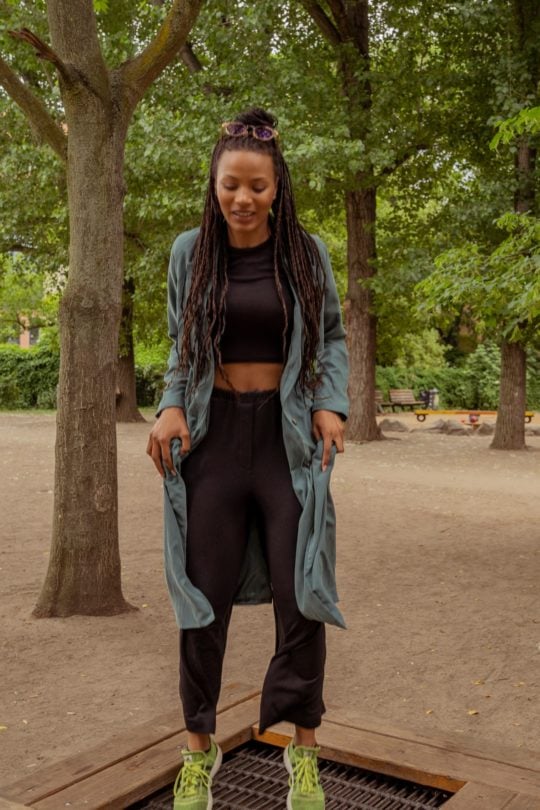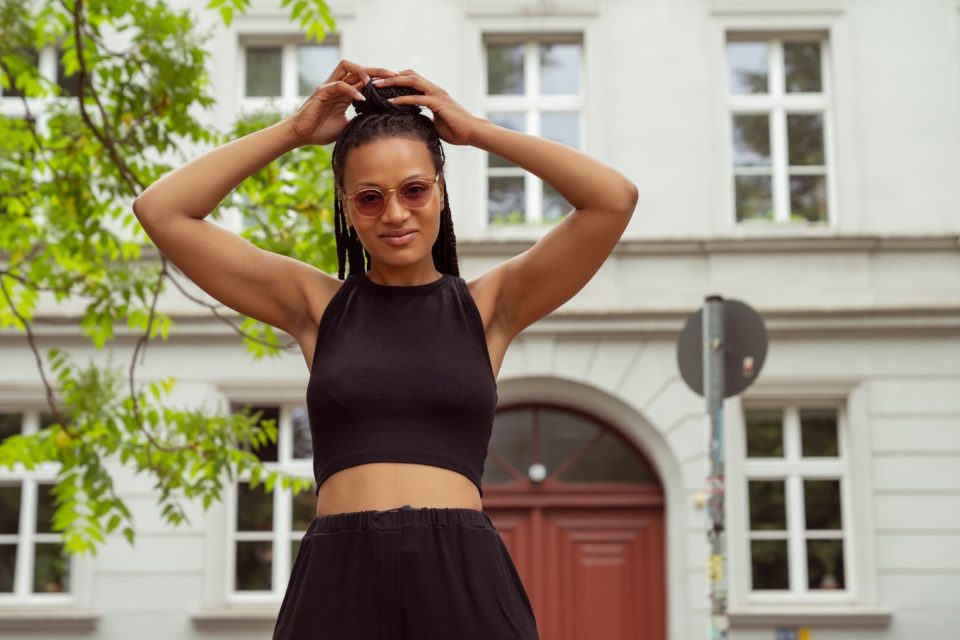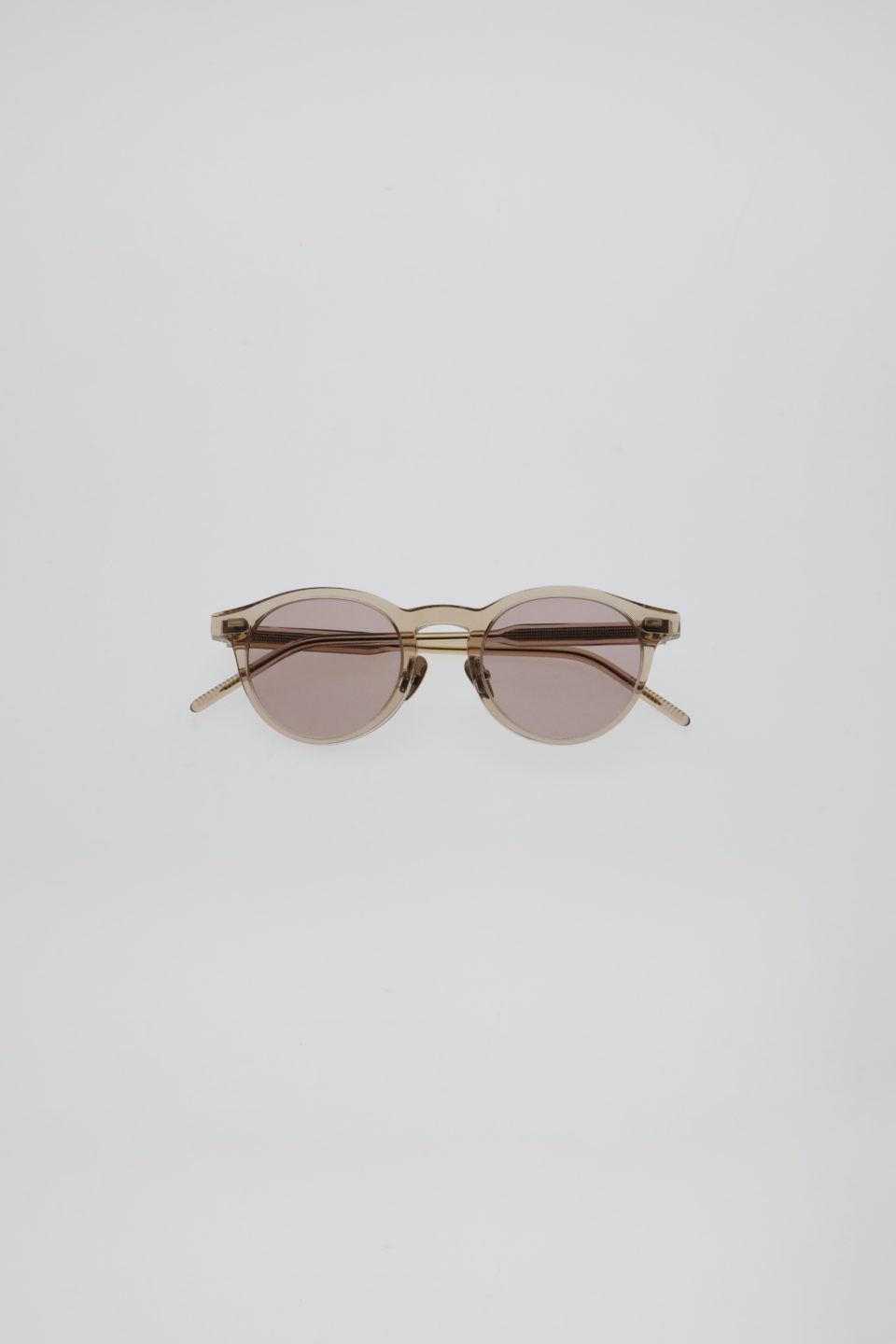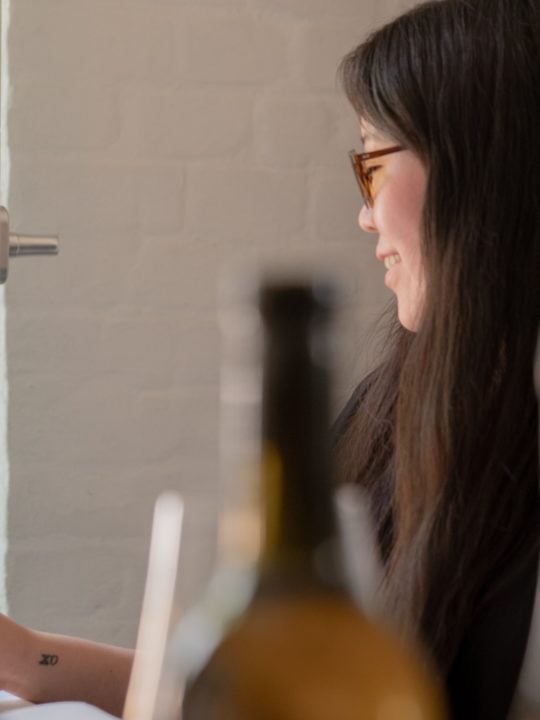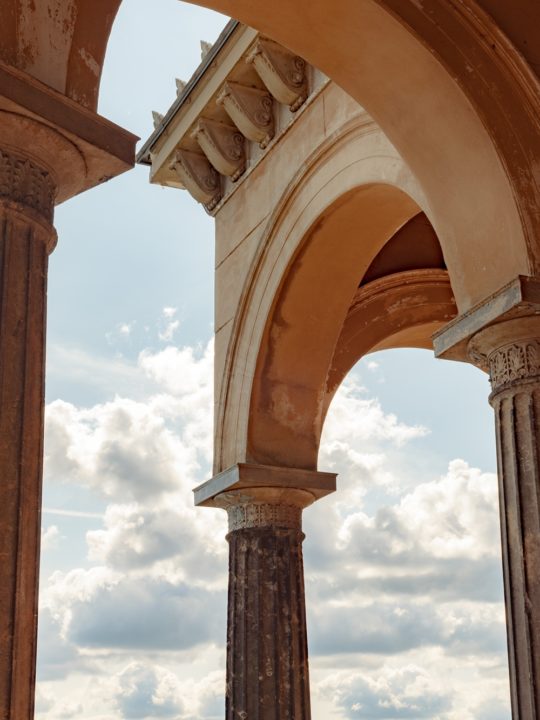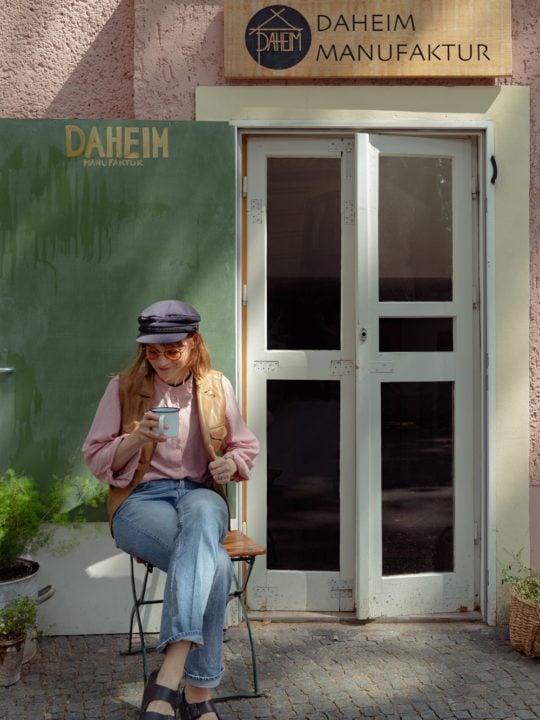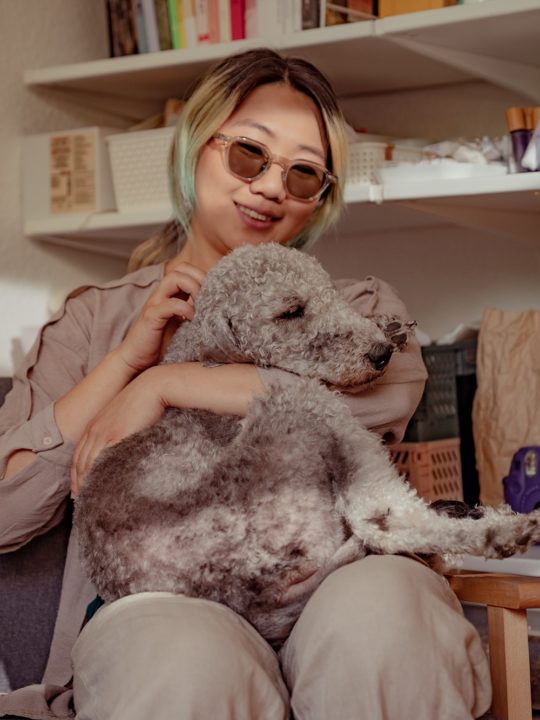AMINA EISNER: BERLIN’S CHANGING SYMPHONY AND DISMANTLING OLD STRUCTURES
In conversation with Amina Eisner.
Actor and author Amina Eisner was born and bred in Berlin’s Mitte borough. The city’s now affluent area, soaked with well-dressed tourists and residents alike, gilded boutiques and foodie-filled cafes, along with the rest of the city post November 1989, has seen a lot of changes since the polymathic talent spent her early days in the ‘90s.
Witnessing these cultural shifts has influenced Amina’s work and career trajectory, and with special thanks to important creative influences in her family, Amina moved to the UK to pursue studies in acting and directing — first in Liverpool, then at Central Saint Martins’ Drama Center in London, where she completed a Masters in Dramatic Writing. In 2015, Amina’s first play, “Young, Toxic and Black”, co-written by Thandi Sebe, premiered at Ballhaus Naunynstraße. For the 2021 WDR 3 Radio play, “Gone With The Wind — The Prissy Edition”, Amina concocted a contemporary tale which reorients Scarlet O’Hara, and introduces perspectives of the Black Diaspora.
Amina Eisner recently starred as the lead in an award-winning performance of “Dreams in Black Major” by New York City’s Ta-Nia, at the Berliner Festspiele Digital TheaterTreffen. She is currently working on two new plays: co-writing one set to premiere at Ballhaus Naunynstraße, and directing another set to be shown in Treptower Park in September 2021. We met Amina on the streets of Mitte, where she reflected on childhood memories, and discussed ways in which Berlin’s creative scene can learn to adapt to the reality of the city’s important culturally diverse landscape.
How did you get started in your career?
My mum used to be a dancer. She would take me along to gigs, rehearsals and all that jazz, so I decided from early on that I was gonna go into theatre. I went to university in the UK, and from there on things kept coming up that kind of steered my career into the direction it’s heading now.
What do you love the most about what you do?
I love the fact that it’s never the same, each job is different. With every project there’s something new. I also get to meet amazing people and am part of an amazing community. What I love most about writing and acting is that it’s a process that’ll never be finished. I get to learn new skills and find out new things about myself all the time.
Being from Berlin, how have you seen the city change over the years?
I grew up in the Berlin of the ‘90s, and the city was just reassembling itself back then. Places that used to be off limits, so-called ‘no-go areas’ have now become cultural hubs. Areas that used to be called ‘rundown’ have been rebuilt in parts and are now ‘the places to be’ (I’m looking at you Kreuzberg & Neukölln)… Unfortunately a lot of former cultural hubs especially nightclubs and bars had to shut because of “new” neighbours complaining about noise and such.
How did the experiences of living and studying in Liverpool and London shape you and your creative process?
I think it helped me a lot to actually see Black people on stage and in leading creative roles to fully understand that I truly CAN do this. I can work in the creative industry and succeed.
It also helped me to look beyond what I knew and broaden my horizon politically as well as creatively and so forth.
What are some of your favorite spots in Mitte?
That’s actually a difficult question, as some of my favorite spots don’t exist anymore. There used to be a shop at the corner of Torstrasse towards Koppenplatz, where myself and the other children in the area would buy school supplies. It was called Koschel and the owner was this amazing older lady who knew all of us and always gave us a pen or eraser as a gift along with our purchase. I think it’s now part of a cafe. I still think about this shop whenever I’m in the area.
Other than that my favorite spots in Mitte are the flats of my friends and family who still live in the area.
What challenges have you faced as a BIPOC in the creative industry in Berlin?
The same challenges I had to face when I was living in London. I had to work non-creative jobs in order to make a living. Which was exhausting at times and drained the creative juices out of me to the point where I considered taking another career path. How I honestly cannot imagine doing anything else. For the best part of my career I felt like no one was taking me seriously, like my ambitions didn’t matter. Both myself and the work I did was belittled (and sometimes still is), mainly by older white cis-men who up to this day dominate the industry and are trying to keep their exclusive boys clubs alive.
On the whole, what are some of the biggest issues facing Black creatives today?
People throw around the term ‘diversity’ as if it’s an accessory, or even worse, a burden.
Look around: Berlin is a diverse hub of people and it always has been. Whether it’s in regards to ethnicity, sexuality and so forth. Berlin has never been just one note, it’s always been a symphony. When we look at representations of Berlin, especially on screen, Black people and people of colour keep getting erased from the narrative… In real life though, you see a sea of different people everywhere.
What can be done to make a change and improve these issues?
We need to keep up the good work without exhausting ourselves. Take breaks and know one’s limits. Policy changes also need to happen to ensure that BiPOC and working class creatives get appropriate funding to compete against creatives who happen to come from a more fortunate background (read: rich parents, inheritance). We need to dismantle old structures and build our own.
What advice would you give to other BIPOC creatives in your specific field who are just starting out?
Just do it. Do your thing and keep creating. Show respect to the people around you but never forget that these people have to respect you too. Take your space and time and just create.

